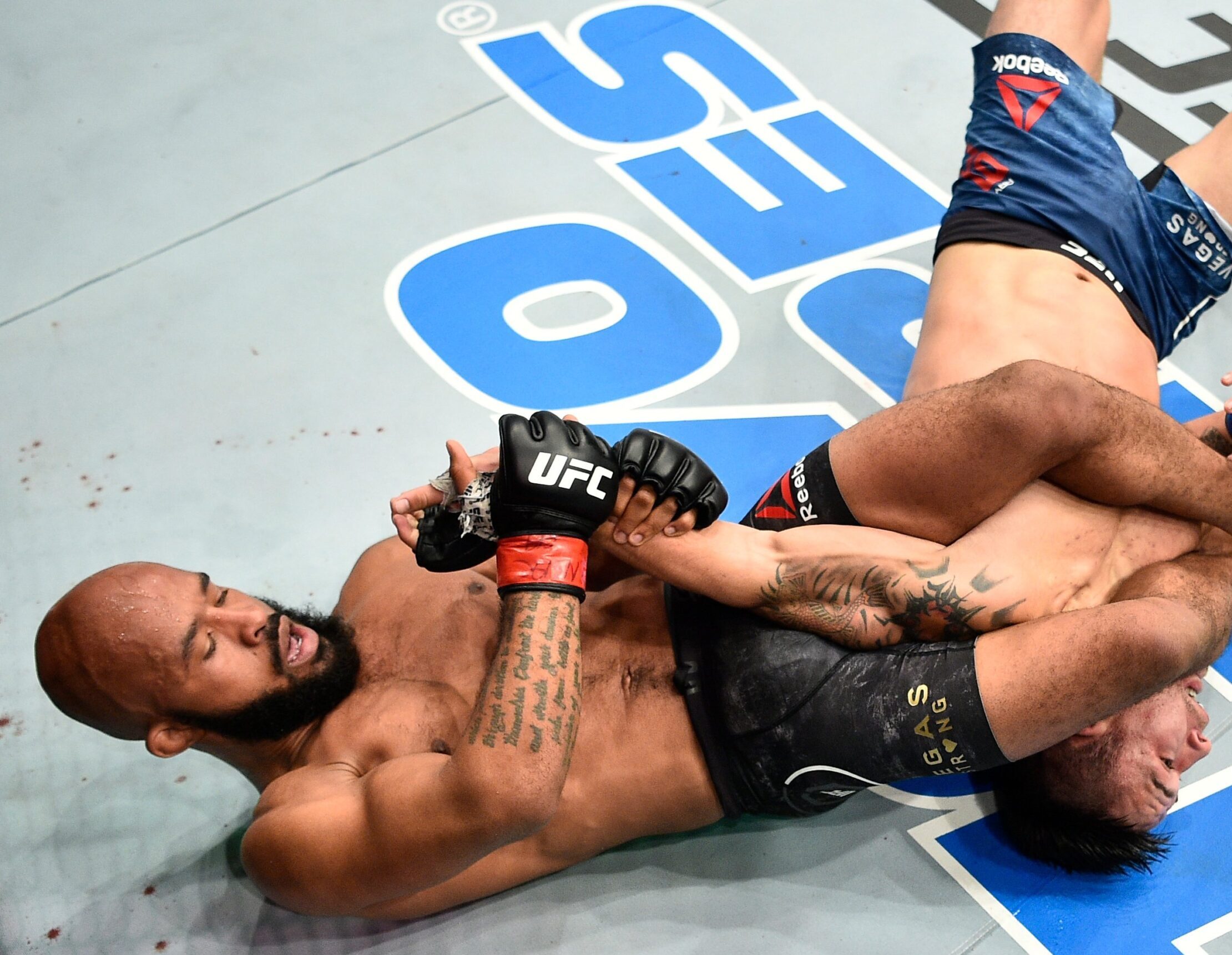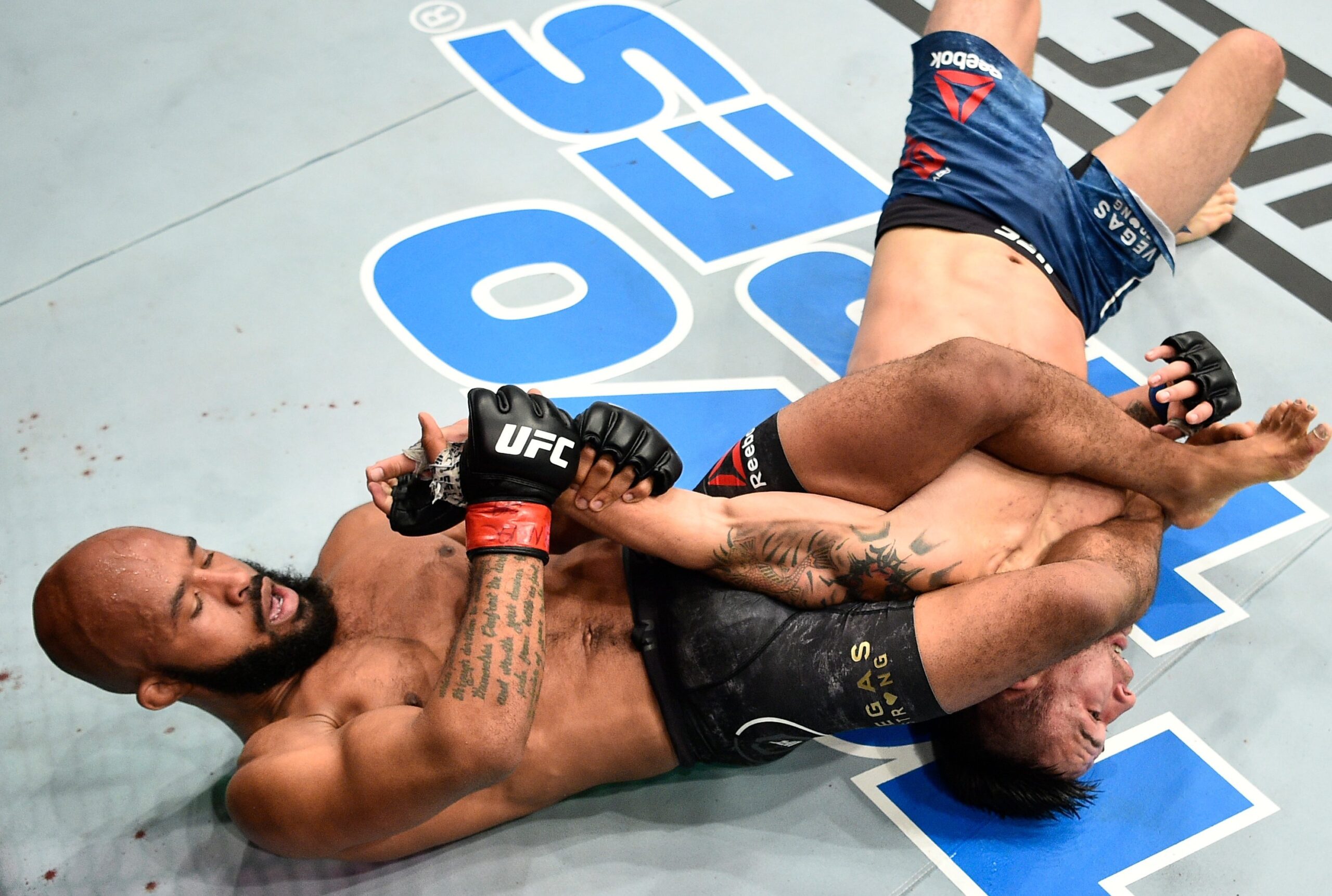 The Top Six High Percentage Submissions for BJJ and MMA
The Top Six High Percentage Submissions for BJJ and MMA
While defense, escapes, and positional dominance are all important in BJJ and MMA, at the end of the day the primary aim of BJJ and most other forms of no-gi grappling is to submit your opponent. Whether you are fighting to represent the best MMA gym in Vancouver or competing at local BJJ tournaments, having an arsenal of high percentage submissions is critical to successful grappling.
The following is a list of 6 submissions with the best rates of success for MMA and BJJ, high percentage attacks that work at all levels of the fight-game.
#1 – Rear-Naked Choke
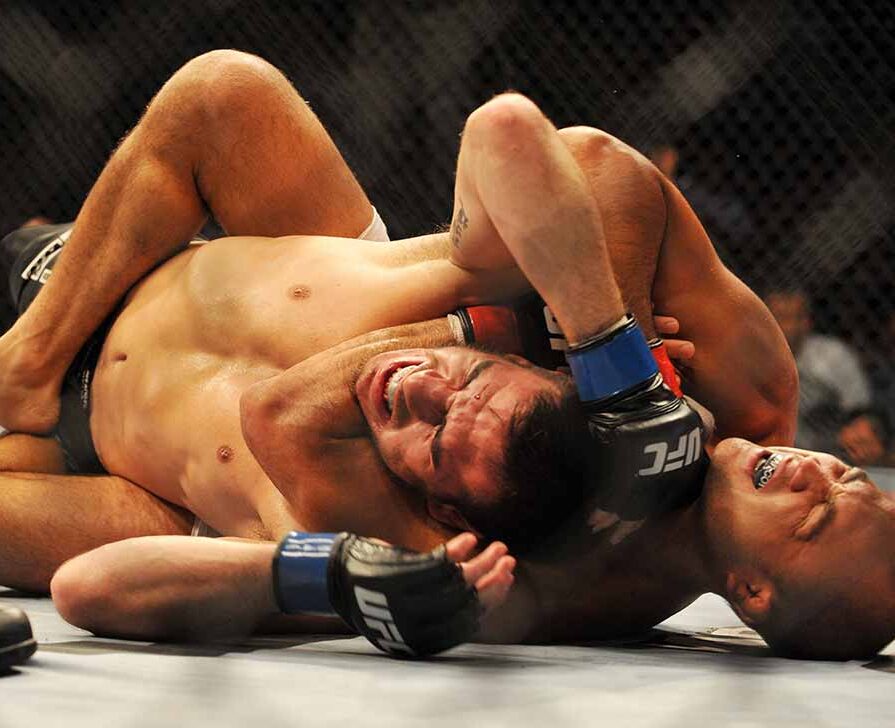
When it comes to high percentage submissions, the rear naked choke easily deserves its spot at the top of the list. This submission is available when you have your opponent’s back, the most dominant position possible. Different BJJ players may favour different variations of how best to apply this submission, but the classic rear-naked choke involves sliding one arm elbow-deep under your opponent’s chin, blocking the carotid arteries on either side, and cupping the bicep on your opposite arm. You will then use the non-choking arm to apply pressure to the back of your opponent’s head to force their neck further into the choke & finish the strangle.
Finishing this choke on a good opponent can require subtle adjustments, such as placing your own head next to your opponent’s head to help expose their chin. Taking a deep breath to expand your chest as you initiate the choke will further reduce the space on your opponent’s neck, increasing the likelihood of a finish.
The rear-naked choke is effective against opponents of all sizes and levels of strength, gives up very little control, and is incredibly difficult to muscle out of.
#2 – Triangle

The triangle choke is a classic head-and-arm choke, applied by the legs from either a top or bottom position. This choke involves clearing your leg over one of your opponent’s arms such that the side of your opponent’s neck is positioned in your knee-pit with the back of your calf perpendicular across the back of their neck. Next, lock your other knee over top of the first leg’s ankle/lower shin, trapping your opponent’s arm and forcing their shoulder into the other side of their neck.
The leg atop your opposite shin is then driven down to apply immense pressure on your opponents neck, strangling them against your thigh on one side and their shoulder on the other. You can also pull down on your opponent’s head to add additional pressure.
The opponent’s exposed, isolated arm allows a relatively easy transition to an armbar from the triangle. In fact, these two submissions provide a very effective submission system when chained together, forcing your opponent to defend one while making themselves susceptible to the other.
#3 – Armbar

The armbar is another long standing, high-percentage submission that is well applied from both top and bottom positions. This submission requires that you isolate the opponent’s upper arm between your legs, their tricep roughly facing your crotch, while securing their forearm and wrist with your own two hands. Extending your hips and keeping their wrist tight to your chest will apply immense pressure to the elbow, hyperextending their arm if they do not tap.
Depending on whether you are attacking from the top or bottom, the armbar will benefit from applying pressure with your calf to either the opponent’s face or the back of their head. You must also pinch your knees together as hard as possible, ensuring they cannot wriggle their arm free.
#4 – Kimura
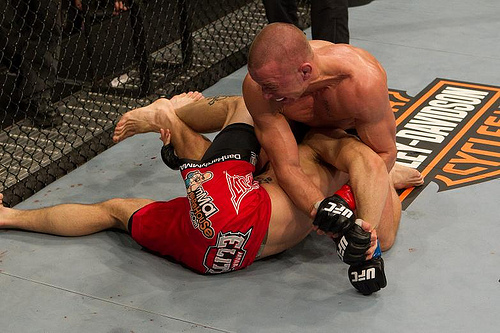
The Kimura is a shoulder-lock submission that over-rotates your opponent’s shoulder, an extension which will eventually dislocate and break the shoulder joint. This submission can be applied from many positions. It is initiated with a secure grip on your opponent’s far wrist from one of your hands; your opposite arm will then wrap over the opponent’s tricep and secure a figure-four grip on your own other wrist.This figure-four grip allows you to control your opponent’s shoulder by twisting your body, exerting immense leverage to drive your opponent’s arm behind them.
In addition to the submission option, the Kimura grip can be used to sweep and even take the opponent’s back, depending on which position it is applied from. Better still, this submission can be used to counter takedowns and guard passes as well.
#5 – Guillotine
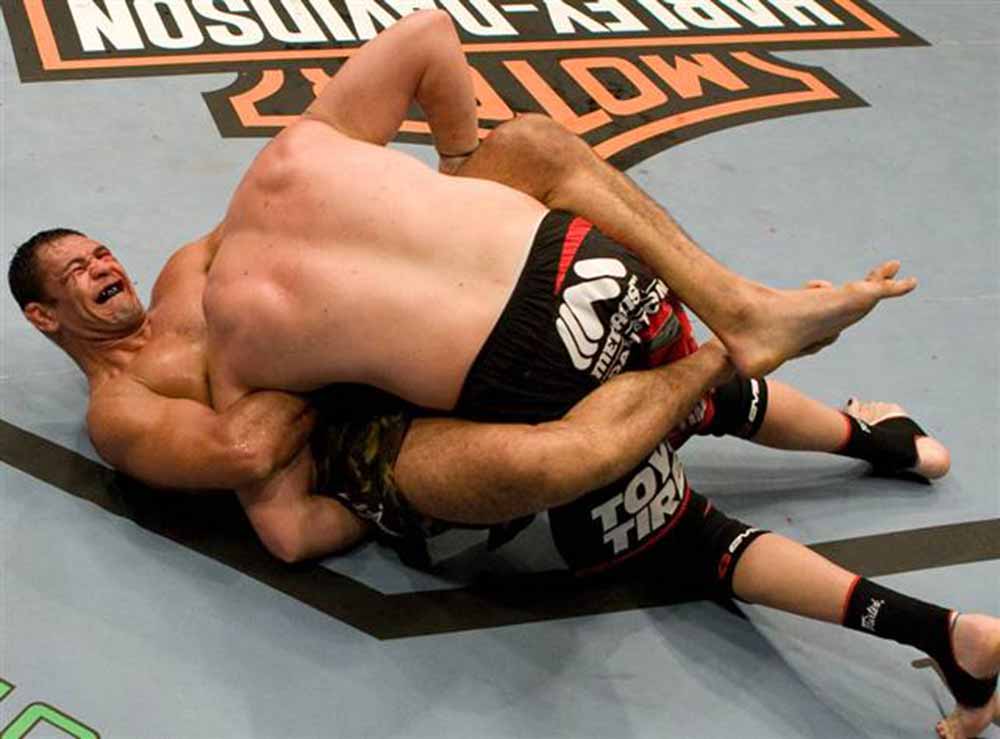
No discussion of high-percentage BJJ and MMA submissions would be complete without the guillotine choke. This choke is generally applied from a front-headlock position, although man variations exist. As the attacker, you’ll wrap your arm around the opponent’s neck, stuffing it behind your armpit and grasping the chin with the same hand. At this point, reach your other hand across your chest and clasp them together, wrenching your arm up to eliminate any space between it and their neck.
The guillotine also can be finished from the top-sprawl position by cupping your hands directly under the opponent’s chin and applying pressure into their throat. There is also popular a high-elbow varient that can be finished from a standing front head-lock: by shooting one of your arms deep under your opponent’s neck, you can drive your choking hand towards the ceiling and cut off the carotid arteries using your elbow pit.
Often, guillotine experts will pull guard once they have a deep wrap on the opponent’s neck. This style of finish can be applied with or without an arm trapped in the choke, although arm-in finishes are far less frequent.
#6 – Heel-hook
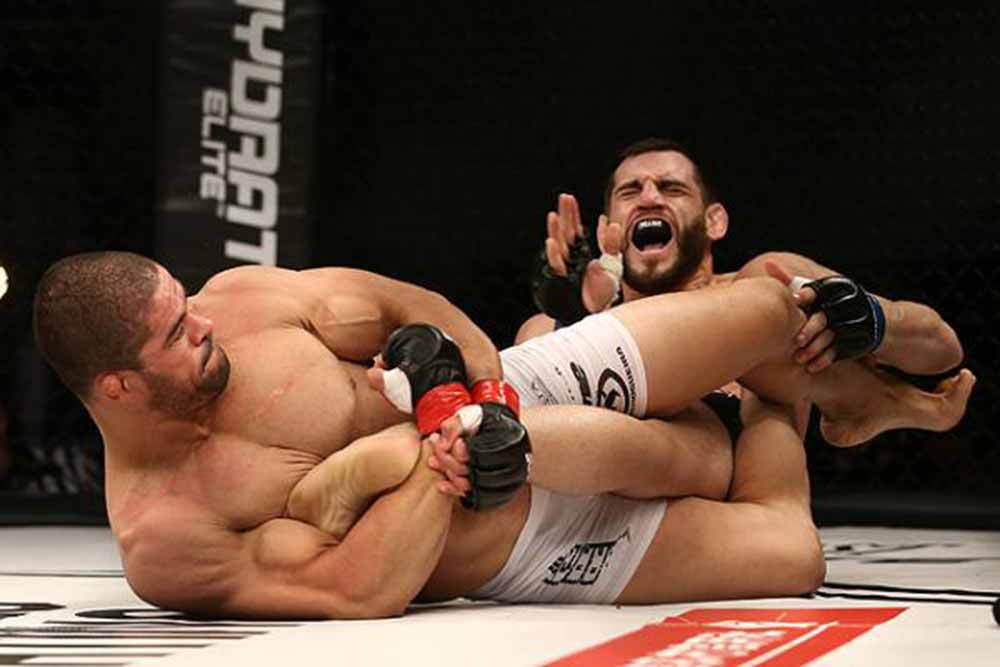
While the heel-hook has historically been looked down upon by traditional BJJ experts, the fact of the matter is that this devastating leg-lock submission is one of the highest percentage finishes in no-gi grappling, and is increasingly being applied by leg-lock experts transitioning to MMA (see Ryan Hall vs BJ Penn).
The heel-hook can be applied from a wide-variety of leg entanglements, including 411/honeyhole, ashi garame, and 50/50 or double-outside-ashi entanglements. The guiding principle of the heel-hook is controlling the opponent’s knee joint with your legs while wrapping up their heel in the crook of your wrist. A sideways crunching motion is then applied with your whole body, forcing the toes down and the heel up to over-rotate the trapped knee joint of your opponent.
Depending on the flexibility of your opponent, this submission may destroy the ankle or knee. Specifically, this submission is notorious for shredding the MCL and ACL ligaments of those who aren’t able to tap quickly enough.
This submission is particularly destructive because for the most part, the submitted opponent will not feel pain until it is too late. Unlike an arm or shoulder lock, where you will feel immense pressure long before serious damage is done to the joint, by the time you hear the sickening pop of a torn MCL and the pain in your knee, you are looking at significant time to recover, and may require surgery including full knee reconstruction.
Additionally, unlike other submissions that rely on top-control and do not significantly expose the attacker to counter-submissions, any leg entanglement can place both competitors in significant danger of being leg-locked. As the adage goes, when it comes to leg-locking, you have to put a quarter in to play the game.
Nevertheless, under proper guidance, heel-hooks can be practiced and performed safely without injury. An experienced leg-locker can recognize the pressure and tap before significant damage is done, provided they are instructed by a qualified coach and have trustworthy training partners.
In Conclusion: There are Endless High-percentage Submission Varieties
Although this list scouts out some of the highest-percentage families of submissions, you will only become proficient at submitting opponents using these and other techniques through years of training at the best BJJ/MMA gyms in your area.
Ultimately, you will have to learn what works with your opponent’s build and your own anatomical perks. Nevertheless, focusing on the above six submissions is a sensible way to make you a more formidable submission grappler, whether you are fighting MMA in Vancouver or Madison Square Garden.
